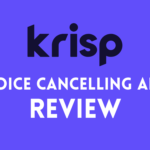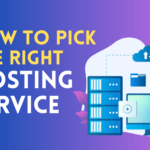Introduction to Growth Hacking
Growth hacking strategies have become an essential strategy for startups looking to achieve rapid growth and success in today’s competitive business landscape. But what exactly is growth hacking? In simple terms, growth hacking refers to the process of using unconventional and innovative marketing strategies to acquire users, retain customers, and drive revenue growth. It is a mindset that combines creativity, data analysis, and experimentation to identify the most effective ways to grow a business.
The concept of growth hacking originated in Silicon Valley during the early 2010s as a response to the challenges faced by startups in scaling their businesses. Traditional marketing methods were often expensive and time-consuming, making it difficult for startups with limited resources to compete with established companies. Growth hacking strategies emerged as a solution that allowed startups to achieve exponential growth on a shoestring budget.
Over the years, growth hacking strategies has evolved from being a buzzword within the startup community to a widely adopted approach by businesses of all sizes. The principles of growth hacking have been applied not only in tech startups but also in various industries such as e-commerce, SaaS (Software as a Service), mobile apps, and more. This evolution can be attributed to the success stories of companies like Airbnb, Dropbox, and Uber, which achieved remarkable growth through innovative strategies.
Another defining characteristic of growth hacking is its emphasis on experimentation. Growth hackers are constantly testing different ideas and hypotheses to find the most effective strategies for driving growth. They use A/B testing methodologies, conduct user surveys, run targeted campaigns, and monitor key metrics to measure the success of their experiments. This iterative process enables them to iterate and refine their strategies based on real-time feedback, ultimately leading to better results.
In summary, growth hacking is a powerful approach that combines creativity, data analysis, and experimentation to drive rapid growth for startups. It has revolutionized the way businesses approach marketing and has become an essential strategy for startups looking to gain a competitive edge. By adopting growth hacking principles and leveraging the right tools and resources, startups can unlock new opportunities for growth and position themselves for long-term success in today’s dynamic business environment.
Why Is Growth Hacking Important?
The concept of growth hacking has gained significant popularity in recent years, particularly among startups and entrepreneurs. But why is growth hacking strategies important? What makes it different from traditional marketing strategies? In this section, we will explore the significance of growth hacking for startups and discuss the benefits of implementing growth hacking strategies.
First and foremost, it is crucial to understand that startups operate under unique circumstances. Unlike established companies with a solid customer base and substantial resources, startups often face limited budgets, fierce competition, and a need for rapid growth. This is where growth hacking strategies becomes essential.
Growth hacking strategies focuses on finding innovative and cost-effective ways to drive user acquisition, engagement, and retention. It leverages data-driven experimentation, creative marketing techniques, and unconventional approaches to achieve exponential growth within a short period. By adopting a growth hacking mindset, startups can overcome resource constraints and accelerate their business’s success.
One of the key benefits of growth hacking is its ability to generate quick results. Traditional marketing methods often require significant time and financial investment before yielding measurable outcomes. Growth hacking strategies, on the other hand, emphasizes agility and speed. It allows startups to test multiple ideas simultaneously, iterate quickly based on real-time feedback, and identify scalable strategies that deliver immediate impact.
Moreover, growth hacking strategies enables startups to optimize their limited resources efficiently. With a focus on high-impact activities that yield maximum returns, startups can prioritize their efforts strategically. This means allocating resources toward initiatives that have the potential to drive exponential growth while minimizing wasteful spending on ineffective tactics.
Another advantage of growth hacking strategies is its emphasis on data analysis and measurement. By leveraging analytics tools and tracking user behavior metrics, startups can gain valuable insights into their target audience’s preferences, pain points, and motivations. These insights enable them to refine their product or service offerings continuously and tailor their marketing campaigns for maximum effectiveness.
Furthermore, growth hacking strategies encourages a culture of innovation within startup organizations. It fosters an environment where experimentation is not only encouraged but also celebrated. This mindset empowers employees to think outside the box, challenge conventional wisdom, and come up with creative solutions to drive growth. As a result, startups can differentiate themselves from competitors and establish a unique value proposition in the market.
In summary, growth hacking is important for startups because it provides them with a systematic approach to achieve rapid and sustainable growth in a resource-constrained environment. By embracing data-driven experimentation, creative marketing techniques, and an agile mindset, startups can overcome challenges, optimize their limited resources efficiently, and drive exponential growth. Ultimately, growth hacking strategies enables startups to gain a competitive edge in today’s fast-paced business landscape.
Setting the Stage for Scaling
Preparing your startup for growth hacking is an essential step in setting the stage for scaling. Before diving into growth hacking strategies, it’s crucial to ensure that your startup is ready to handle rapid growth and expansion. This involves putting certain processes and systems in place to support the increased demand and maintain a high level of customer satisfaction.
One of the first steps in preparing your startup for growth hacking is to identify key metrics and goals. These metrics will serve as benchmarks to measure the success of your growth hacking efforts. By setting clear goals, you can align your growth hacking strategies with your overall business objectives.
Start by determining which key performance indicators (KPIs) are most relevant to your startup’s growth. For example, if you’re an e-commerce company, you might focus on metrics such as customer acquisition cost, customer lifetime value, conversion rate, and average order value. If you’re a software-as-a-service (SaaS) company, on the other hand, you might prioritize metrics like monthly recurring revenue (MRR), churn rate, and user engagement.
Once you’ve identified your KPIs, it’s important to establish baseline measurements for each metric. This will allow you to track progress over time and assess the impact of your growth hacking strategies. Implementing analytics tools such as Google Analytics or Mixpanel can help you gather data and gain insights into user behavior.
In addition to tracking KPIs, it’s also crucial to have a solid understanding of your target audience. Who are your ideal customers? What are their pain points? Where do they spend their time online? Conducting thorough market research and creating buyer personas can provide valuable insights that will inform your growth hacking strategies.
Furthermore, building a strong foundation for scaling requires having scalable infrastructure in place. This includes investing in reliable hosting services or cloud-based solutions that can handle increased traffic and user demand without compromising performance or security. Additionally, having a scalable customer support system, such as chatbots or a dedicated support team, is essential to ensure that you can effectively handle customer inquiries and issues as your user base grows.
Remember, growth hacking is not a one-size-fits-all approach. It requires continuous experimentation, data analysis, and adaptation to find what works best for your specific startup. With the right preparation and a solid foundation in place, you’ll be well-equipped to leverage growth hacking strategies to drive rapid and sustainable growth for your startup.
Growth Hacking Fundamentals
Growth hacking is a mindset and set of strategies that focus on rapid experimentation and iterative improvements to drive sustainable business growth. To truly understand growth hacking fundamentals, it’s important to grasp the key principles and mindset behind this approach.
Firstly, growth hackers prioritize data-driven decision making. They rely heavily on analytics and user feedback to identify opportunities for growth. By analyzing data from various sources such as website traffic, user behavior, and customer feedback, growth hackers can gain valuable insights into what works and what doesn’t. This allows them to make informed decisions and optimize their strategies accordingly.
Secondly, growth hacking requires a deep understanding of the target audience. Growth hackers invest time in researching their users’ needs, pain points, and behaviors. This knowledge helps them tailor their marketing messages, product offerings, and user experiences to resonate with their target audience. By delivering personalized experiences that address specific pain points or offer unique value propositions, growth hackers can attract and retain more customers.
Another fundamental aspect of growth hacking strategies is the emphasis on experimentation. Growth hackers are not afraid to take risks or try unconventional methods to achieve rapid growth. They constantly test different strategies, channels, messaging techniques, and product features to see what resonates best with their audience. Through A/B testing and other experimentation methods, they can quickly identify winning tactics that drive significant results.
In addition to experimentation, collaboration is also crucial for successful growth hacking. Growth hackers understand the importance of building cross-functional teams that bring together diverse skill sets and perspectives. By working collaboratively with professionals from various disciplines such as marketing, product development, design, and data analysis, they can leverage collective expertise to devise innovative growth strategies.
Growth Hacking Strategies for Tech Startups
Growth hacking strategies are crucial for the success of tech startups. These strategies focus on rapidly acquiring and retaining users, maximizing growth, and achieving sustainable business growth. In this section, we will explore some effective growth hacking strategies that can help tech startups achieve their goals.
1. Targeting and Acquiring the Right Audience
One of the first steps in growth hacking strategies is identifying and targeting the right audience for your product or service. Understanding your target market’s needs, preferences, and pain points is essential for developing effective marketing campaigns. Start by conducting thorough market research to gain insights into your potential customers.
Once you have identified your target audience, it’s important to reach them through various channels. Utilize social media platforms, content marketing, search engine optimization (SEO), and paid advertising to increase brand visibility and attract potential users. By focusing on targeted marketing efforts, you can maximize your chances of acquiring users who are genuinely interested in what you have to offer.
2. Optimizing User Onboarding and Activation
User onboarding plays a critical role in the success of any tech startup. It refers to the process of guiding new users through their initial experience with your product or service. A smooth onboarding experience increases user satisfaction and reduces churn rates.
To optimize user onboarding, start by simplifying the registration or sign-up process. Minimize the number of required fields and make it easy for users to create an account. Provide clear instructions and guidance throughout the onboarding process to help users understand how to use your product effectively.
Additionally, consider implementing activation techniques to encourage users to take specific actions within your product or service. This could include completing their profile, making a purchase, or inviting friends to join. By incentivizing these actions and providing a seamless user experience, you can increase user engagement and drive growth.
3. Implementing Viral Marketing Techniques
Viral marketing is a powerful growth hacking strategy that leverages word-of-mouth promotion to rapidly spread awareness about your product or service. By creating highly shareable content, incentivizing referrals, or implementing viral loops, you can encourage users to share your brand with their networks.
To implement viral marketing techniques effectively, focus on creating valuable and engaging content that resonates with your target audience. This could include informative blog posts, entertaining videos, or interactive quizzes. Encourage social sharing by incorporating social media buttons and providing incentives for users who refer others to your product.
4. Leveraging Data-Driven Decision Making
Data-driven decision making is at the core of growth hacking strategies for tech startups. By analyzing user data and metrics, you can gain valuable insights into user behavior, preferences, and pain points. These insights can help you optimize your marketing campaigns, improve user experience, and drive growth.
Start by setting up analytics tools to track user interactions and behavior within your product or service. Use this data to identify patterns and trends that can inform your growth hacking strategies. For example, if you notice a high drop-off rate during the onboarding process, you can analyze the data to identify potential pain points and make necessary improvements.
Case Studies and Examples of Successful Growth Hacking Strategies
Growth hacking is a term that has gained popularity in recent years, particularly among startups and entrepreneurs. It refers to the use of creative and unconventional marketing strategies to rapidly grow a company’s user base or customer acquisition. In this section, we will explore several case studies and examples of successful growth hacking strategies employed by well-known companies.
Case Study 1: LinkedIn

LinkedIn, the leading professional networking platform, utilized a growth hack that allowed users to import their email contacts and connect with them on the platform. This feature proved to be instrumental in expanding LinkedIn’s network quickly. By tapping into users’ existing contacts, LinkedIn was able to reach a critical mass of users within a short period.
The outcome of this growth hacking strategy was significant for LinkedIn. It helped the platform establish itself as the go-to place for professionals looking to connect with others in their industry. As more professionals joined LinkedIn and connected with their peers, the value proposition of the platform increased exponentially.
Case Study 2: Uber

Uber, the ride-sharing giant, is known for its rapid global expansion. One of the key growth hacks employed by Uber was its referral program. By offering referral bonuses for both riders and drivers who referred new users to the platform, Uber created a network effect that fueled its growth.
Through this referral system, existing users were incentivized to invite their friends and family members to join Uber. This not only helped Uber acquire new customers but also ensured that those customers had a high likelihood of becoming loyal users themselves.
The outcome of this growth hacking strategy was evident in Uber’s exponential growth across various markets worldwide. The referral program played a crucial role in establishing Uber as a dominant player in the ride-sharing industry.
Case Study 3: Dropbox

Dropbox, the cloud storage provider, experienced remarkable growth within a short period through its innovative referral program. The company rewarded users with additional storage space for referring new users to the platform. This growth hacking strategy proved to be highly effective in driving user acquisition and adoption.
By incentivizing existing users to refer others, Dropbox was able to tap into their networks and reach a wider audience. This viral loop created a snowball effect, leading to exponential growth in the number of Dropbox users.
In just 15 months, Dropbox grew from 100,000 to 4 million users, showcasing the power of a well-executed growth hacking strategy. The referral program not only helped Dropbox acquire new customers but also increased engagement and retention among existing users.
Case Study 4: Instagram

Instagram, the popular photo-sharing platform, leveraged cross-promotion with popular influencers and celebrities as part of its growth hacking strategy. By encouraging these influential individuals to use the platform and share their photos, Instagram gained rapid popularity among their followers.
The outcome of this growth hacking strategy was remarkable for Instagram. Within just two years of its launch, Instagram surpassed 100 million users. The endorsement from influential figures played a pivotal role in attracting new users and establishing Instagram as a leading social media platform.
Case Study 5: Hotmail

Hotmail revolutionized email marketing with its simple yet effective growth hacking strategy. Hotmail added a message at the bottom of every outgoing email encouraging recipients to sign up for a free Hotmail account. This viral loop helped Hotmail acquire millions of users within a short period.
The outcome of this growth hacking strategy was evident in Hotmail’s rapid user acquisition. The simple message at the end of every email acted as a constant reminder for recipients to join Hotmail, leading to exponential growth in its user base. This growth ultimately led to Hotmail’s acquisition by Microsoft.
Case Study 6: Airbnb

Airbnb, the online marketplace for accommodations, utilized Craigslist integration as a growth hack to boost its initial user base. Airbnb enabled automatic cross-posting of listings on Craigslist, exposing their platform to a wider audience searching for accommodations.
This growth hacking strategy significantly contributed to Airbnb’s early growth. By leveraging Craigslist’s established user base and reach, Airbnb was able to attract new hosts and guests quickly. The integration with Craigslist played an instrumental role in building trust and credibility among potential users.
Challenges and Pitfalls
As with any business strategy, growth hacking is not without its challenges and potential pitfalls. While growth hacking strategies can be highly effective in driving rapid growth for startups, it requires careful planning and execution to avoid common pitfalls that can hinder success.
One of the most common challenges faced in growth hacking is the need for constant experimentation and iteration. Growth hackers are constantly testing different strategies, tactics, and channels to find what works best for their startup. This requires a high level of agility and adaptability, as well as a willingness to embrace failure as a learning opportunity.
Another challenge is the limited resources that startups often face. Unlike established companies with larger budgets, startups typically have limited financial resources, manpower, and time. This means that growth hackers need to be resourceful and creative in finding low-cost or no-cost solutions to drive growth.
Additionally, scalability can be a major challenge for startups implementing growth hacking strategies. While certain tactics may work well in the early stages of a startup’s growth, they may become less effective or even unsustainable as the company scales. Growth hackers must constantly reassess their strategies and adapt them to accommodate the changing needs of a growing business.
Furthermore, data analysis can also present challenges in growth hacking strategies. Collecting and analyzing data is crucial for understanding user behavior, identifying trends, and making data-driven decisions. However, startups may lack the necessary tools or expertise to effectively collect and analyze data. Without proper data analysis capabilities, growth hackers may struggle to accurately measure the impact of their strategies or identify areas for improvement.
Lastly, growth hackers must be cautious of ethical considerations. Some growth hacking techniques, such as aggressive email marketing or misleading advertising, can damage a startup’s reputation and alienate potential customers. It is important for growth hackers to prioritize ethical practices and ensure that their strategies align with the values and principles of their target audience.
Tools and Resources for Growth Hacking Strategies
In the fast-paced world of startups, growth hacking is essential for achieving rapid and sustainable growth. To implement effective growth hacking strategies, startups need to leverage a variety of tools and resources. These tools not only streamline processes but also provide valuable insights and data-driven solutions. In this section, we will explore some essential growth hacking tools for startups and recommend additional resources and platforms.
Essential Growth Hacking Tools for Startups
- Google Analytics: This powerful tool provides startups with invaluable insights into their website traffic, user behavior, and conversion rates. By analyzing this data, startups can identify areas for improvement and optimize their marketing efforts.
- Optimizely: A/B testing is a crucial aspect of growth hacking, allowing startups to experiment with different variations of their website or app to determine what resonates best with users. Optimizely simplifies the process by providing an intuitive platform for designing and deploying experiments.
- Mixpanel: This analytics platform goes beyond traditional analytics by focusing on user actions rather than page views. Startups can track specific events such as sign-ups, purchases, or feature usage to gain a deeper understanding of user behavior and optimize their product accordingly.
- Hotjar: Heatmaps, session recordings, and user feedback are invaluable when it comes to understanding how visitors interact with a website or app. Hotjar offers all these features in one platform, allowing startups to visualize user behavior and make data-driven decisions.
- Mailchimp: Email marketing remains a powerful tool for driving customer engagement and retention. Mailchimp simplifies the process by providing an easy-to-use platform for creating email campaigns, managing subscriber lists, and tracking performance metrics.
- Buffer: Social media plays a vital role in growth hacking strategies by increasing brand visibility and driving traffic to websites or apps. Buffer allows startups to schedule posts across multiple social media platforms, analyze engagement metrics, and optimize their social media presence.
Recommended Resources and Platforms
In addition to the essential tools mentioned above, startups can benefit from various resources and platforms that provide valuable insights and guidance on growth hacking strategies. Here are some recommended resources:
- GrowthHackers.com: This online community is a treasure trove of growth hacking knowledge and case studies. Startups can learn from industry experts, share their own experiences, and stay up-to-date with the latest trends in growth hacking strategies.
- Moz: Moz offers a suite of SEO tools and resources that can help startups improve their search engine rankings and drive organic traffic to their websites or apps. Their blog, Whiteboard Friday videos, and Moz Academy provide valuable insights into SEO best practices.
- HubSpot Academy: HubSpot offers a comprehensive range of free online courses on inbound marketing, content marketing, email marketing, and more. Startups can enhance their marketing skills and stay ahead of the curve by taking advantage of these educational resources.
- Product Hunt: This platform is a goldmine for discovering new tools, products, and services that can boost startup growth. By browsing through the latest launches in various categories, startups can find innovative solutions to address their specific growth challenges.
Conclusion
In conclusion, growth hacking strategies have become an essential component for startups looking to achieve rapid and sustainable growth. By leveraging innovative techniques and tools, startups can overcome challenges and scale their businesses effectively. Throughout this guide, we have explored the definition and evolution of growth hacking, examined successful case studies, and highlighted key strategies for tech startups. We have also discussed the challenges and pitfalls that startups may encounter during their growth hacking journey, particularly when faced with limited resources. However, despite these challenges, it is important for startups to remain resilient and adaptable in order to maximize their growth potential.
As we conclude this guide, it is important to emphasize that growth hacking is not a one-size-fits-all approach. Each startup will have its own unique set of circumstances and goals that require tailored strategies. It is crucial for entrepreneurs and marketing professionals to continuously experiment, analyze data, and iterate on their growth hacking efforts.
In summary, the ultimate guide to growth hacking strategies for startups has provided valuable insights into the world of growth hacking. By understanding the fundamentals, learning from successful case studies, overcoming challenges with limited resources, and utilizing the right tools, startups can unlock their full potential for rapid and sustainable growth. With dedication, creativity, and perseverance, any startup can embark on a successful growth hacking journey towards achieving its business objectives.












